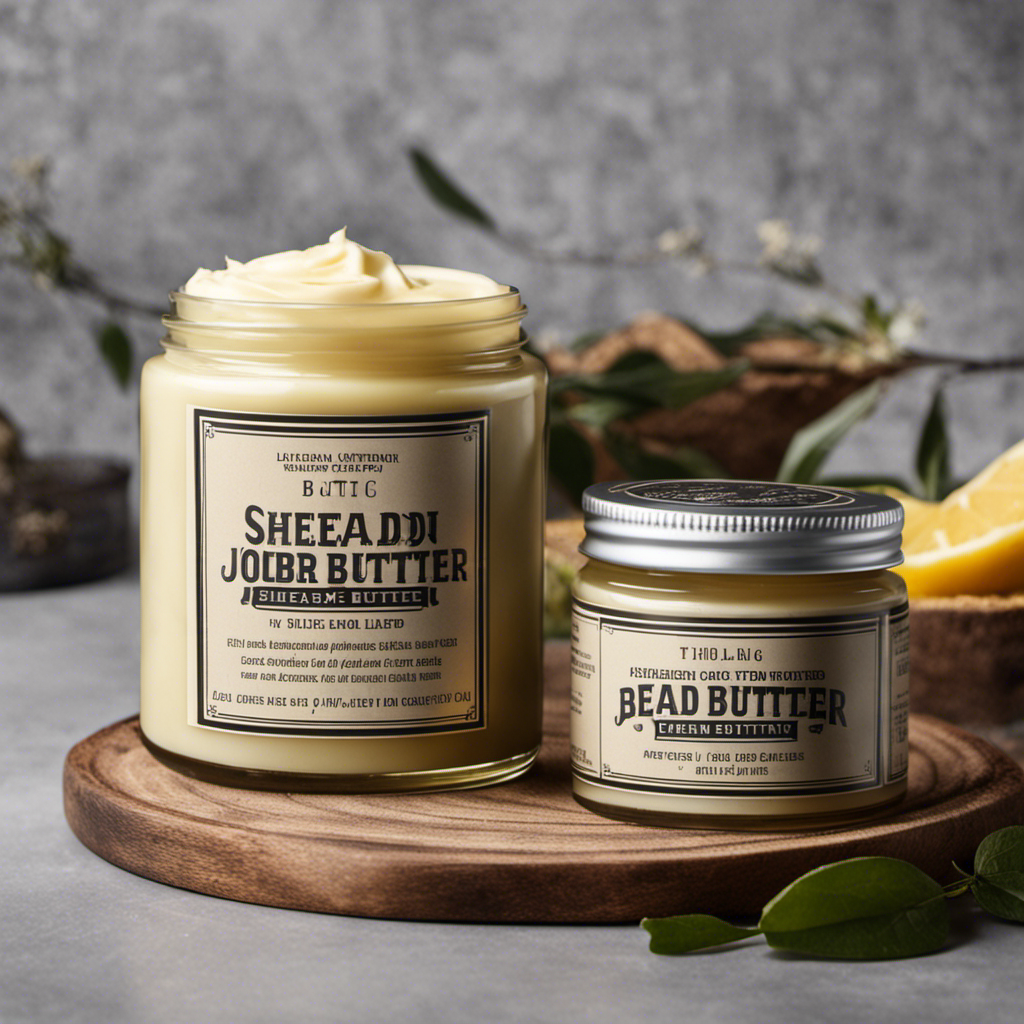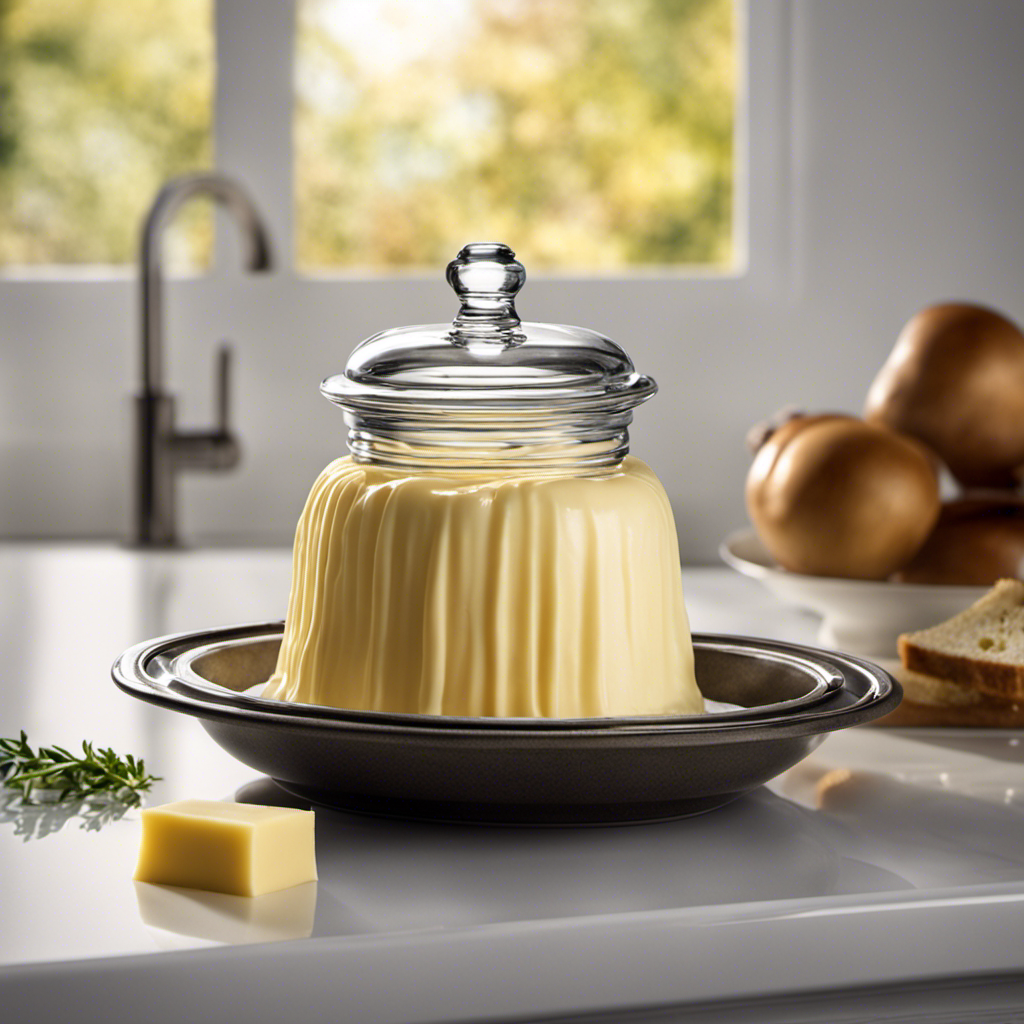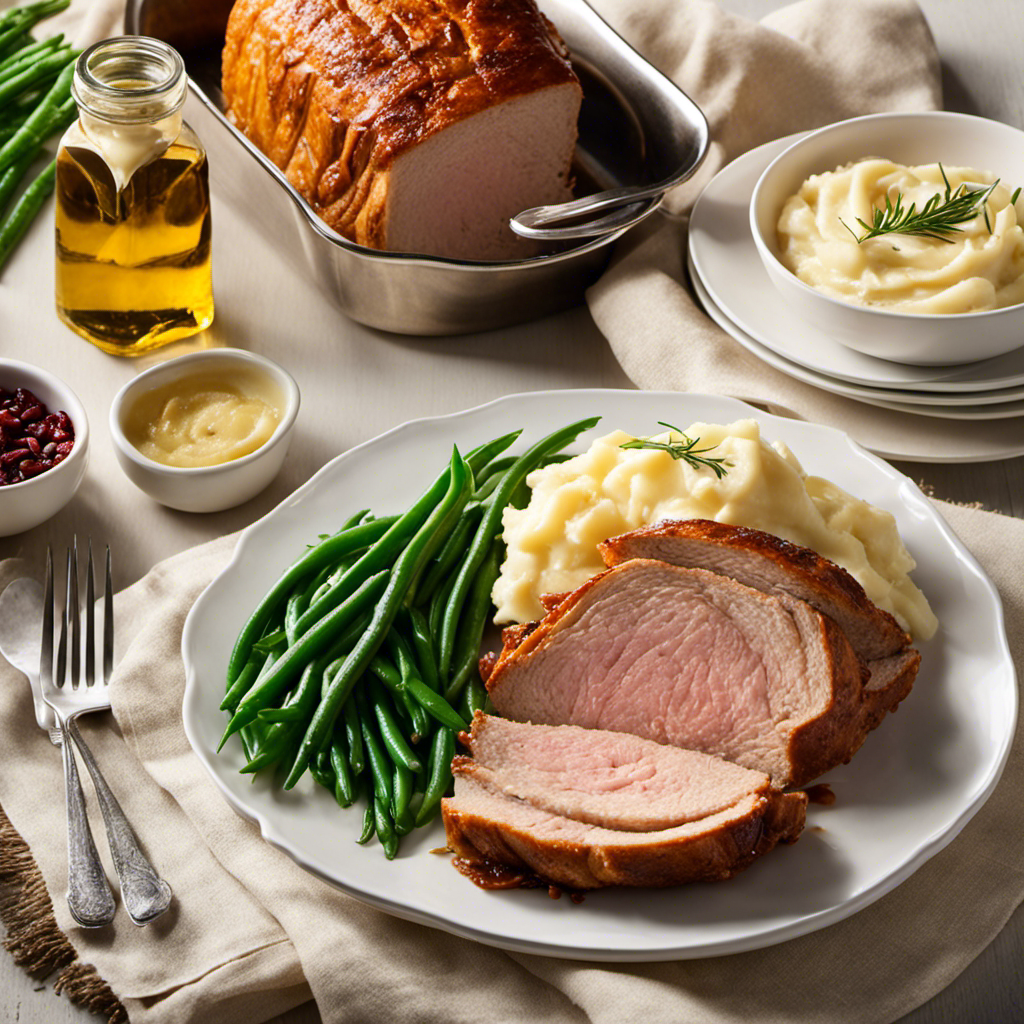Recently, I have noticed a peculiar phenomenon – my urine has a buttery smell. It has certainly caught my attention, and I believe I am not the only one detecting this unusual odor.
But what exactly causes this phenomenon? In this article, we will delve into the science behind the smell and explore the common causes of butter-like odor in urine.
From dietary factors to medical conditions and even hormonal imbalances, we’ll uncover the reasons behind this unusual scent.
So, let’s dive in and unravel the mystery of why our pee smells like butter.
Key Takeaways
- Urine odor is caused by chemical compounds, including ammonia and sulfur compounds.
- Dehydration, certain foods, urinary tract infections, liver disease, and kidney problems can all contribute to a butter-like smell in urine.
- Dietary factors, such as consuming asparagus, coffee, garlic, or curry, can also affect urine odor.
- Medications and certain medical conditions, particularly kidney problems and urinary tract infections, can result in changes in urine odor.
The Science Behind the Smell
The smell of urine can be explained by the science of chemical compounds. Urine odor causes can vary depending on several factors, including diet, hydration levels, medications, and underlying medical conditions.
One of the main reasons urine can have a strong odor is due to the presence of certain chemical compounds. For example, ammonia is produced when proteins break down in the body and can give urine a pungent smell. Similarly, sulfur compounds can be released during the breakdown of sulfur-containing amino acids, resulting in a foul odor.
Additionally, certain medications and foods, such as asparagus or garlic, can also contribute to changes in urine odor. Understanding the role of these chemical compounds can help identify potential causes of urine odor and seek appropriate medical advice if necessary.
Common Causes of Butter-Like Odor in Urine
One common cause of urine having a buttery odor is dehydration. When the body lacks sufficient water, urine becomes concentrated, leading to a stronger odor. Dehydration can also cause urine color changes, such as dark yellow or amber. However, it’s important to note that dehydration is not the only factor that can contribute to a butter-like odor in urine.
Our diet can also play a role. Certain foods, like asparagus or garlic, can affect the smell of urine. For example, asparagus contains a sulfur compound that can give urine a distinctive odor. Additionally, some medical conditions, such as urinary tract infections or liver disease, can cause changes in urine odor.
Understanding these factors can help us identify potential causes and seek appropriate medical advice if necessary. Speaking of diet, let’s now explore the impact of dietary factors on urine odor.
Dietary Factors and Urine Odor
Let’s take a look at how diet can affect the odor of our urine. The foods we consume can have a significant impact on the smell of our pee. Here are three ways certain foods can contribute to strong smelling urine:
-
Asparagus: One of the most well-known culprits behind pungent urine is asparagus. When we eat asparagus, our bodies break down certain sulfur-containing compounds, resulting in a distinct odor in our urine.
-
Coffee: Drinking coffee can also impact the smell of our urine. The caffeine in coffee acts as a diuretic, causing increased urine production. This can lead to a more concentrated urine, which may have a stronger odor.
-
Spices: Certain spices, such as garlic and curry, contain volatile compounds that can be excreted in our urine. These compounds can cause a strong, sometimes unpleasant, odor.
Medical Conditions Linked to Butter-Like Smelling Urine
When it comes to the odor of urine resembling butter, there can be various underlying kidney problems that should not be ignored. Kidney infections, kidney stones, and even kidney failure can all contribute to this distinctive smell.
Additionally, certain dietary causes such as consuming excessive amounts of certain foods like asparagus or strong-smelling spices can also result in a butter-like odor.
Underlying Kidney Problems
There’s a chance that your pee smelling like butter could be a sign of underlying kidney problems. When your kidneys are not functioning properly, it can lead to changes in urine color and odor.
Here are three reasons why your pee might smell like butter and what it could mean for your kidney function:
-
Dehydration: When you’re dehydrated, your urine becomes more concentrated, which can lead to a stronger odor. It’s important to drink enough water to keep your kidneys hydrated and functioning optimally.
-
Urinary tract infection (UTI): UTIs can cause changes in urine odor, including a butter-like smell. If you’re experiencing other symptoms such as pain or burning during urination, it’s important to see a healthcare professional for diagnosis and treatment.
-
Kidney disease: Chronic kidney disease can cause changes in urine odor and color. If you have persistent butter-like smelling urine, along with other symptoms such as frequent urination, fatigue, or swelling, it’s important to get evaluated by a healthcare professional to assess your kidney function.
Dietary Causes of Odor?
One possible cause of changes in urine odor could be certain foods in your diet. What you eat has a direct impact on the smell of your urine. Some foods contain compounds that can give your urine an unusual odor. Here are some common foods and their associated smells:
| Food | Smell |
|---|---|
| Asparagus | Strong, pungent odor |
| Coffee | Strong, distinct aroma |
| Garlic | Pungent, sulfur-like smell |
| Alcohol | Fruity, sweet, or acidic odor |
It is important to note that these odors are temporary and typically harmless. However, if you notice a persistent strong odor or any other unusual changes in your urine, it is always a good idea to consult a healthcare professional. Maintaining good dietary habits and hygiene practices can help manage any potential odor issues.
Medications and Urine Odor
Certain medications can cause urine to have an unusual odor. This can be concerning and may make you wonder what is causing the change in smell. Here are three possible reasons why medications can impact urine smell:
-
Metabolism: Medications can be broken down by the body into different byproducts. These byproducts can be excreted through urine, leading to changes in odor.
-
Chemical composition: Some medications contain compounds that can alter the smell of urine. For example, certain antibiotics can give urine a strong, pungent odor.
-
Kidney function: Certain medications can affect the functioning of the kidneys, which play a crucial role in filtering waste products from the blood. If the kidneys are not functioning properly, the concentration of chemicals in the urine may change, resulting in an unusual odor.
It’s important to note that if you notice a significant change in urine odor after starting a new medication, it’s best to consult your healthcare provider for further evaluation.
Dehydration and Urine Odor
Dehydration is a common issue that can have various causes and can greatly impact urine odor. When the body lacks adequate fluids, it is unable to properly flush out waste products, leading to a more concentrated urine and potentially foul odor.
However, there are steps that can be taken to prevent the effects of dehydration on urine odor. These steps include drinking enough water and staying properly hydrated throughout the day.
Causes of Dehydration
Did you know that not drinking enough water can cause your urine to have a strong odor? It’s true! Dehydration can lead to a number of unpleasant symptoms, including dark and smelly urine.
Here are three important things to know about the causes of dehydration:
-
Inadequate fluid intake: One of the main causes of dehydration is simply not drinking enough water. When we don’t replenish the fluids our body needs, it can result in dehydration and concentrated urine.
-
Excessive sweating: Engaging in intense physical activity or being in hot weather can cause excessive sweating, leading to fluid loss and dehydration. This can also contribute to strong-smelling urine.
-
Illness or medication: Certain medical conditions, such as diabetes or kidney disease, can affect the way our body processes fluids. Additionally, some medications may have diuretic effects, causing increased urine production and potential dehydration.
Impact on Urine Odor
Dehydration can have various effects on our bodies, and one of them is the impact on urine odor. When we are dehydrated, our urine becomes more concentrated, leading to a stronger and sometimes unusual smell.
However, it’s important to note that urine odor can also be influenced by dietary factors. Certain foods, such as asparagus or garlic, can cause a temporary change in urine odor. Additionally, consuming large amounts of certain vitamins or minerals, like vitamin B6 or iron, can also affect the smell of urine.
It’s crucial to stay hydrated and maintain a balanced diet to support optimal health. If you notice persistent changes in urine odor or have concerns about your health, it’s always best to consult a healthcare professional.
Preventing Dehydration Effects
To prevent the effects of dehydration, it’s important to drink plenty of water throughout the day. Staying hydrated is crucial for our overall well-being and can help prevent dehydration symptoms.
Here are three simple ways to maintain hydration levels:
-
Carry a water bottle with you: Having a water bottle handy serves as a constant reminder to drink water throughout the day. It’s a convenient way to stay hydrated, especially when you’re on the go.
-
Set reminders: In our busy lives, it’s easy to forget to drink water. Set reminders on your phone or use apps to prompt you to have a glass of water every hour or so.
-
Eat hydrating foods: Many fruits and vegetables have high water content and can contribute to your daily hydration needs. Foods like watermelon, cucumber, and strawberries are not only refreshing but also help keep you hydrated.
By following these tips, you can prevent dehydration symptoms and maintain optimal hydration levels.
Now, let’s delve into the topic of urinary tract infections and the butter-like smell in urine.
Urinary Tract Infections and Butter-Like Smell in Urine
Urinary tract infections can sometimes cause urine to have a butter-like smell. This distinct odor is often a result of hormonal imbalances that can occur during an infection. When bacteria enter the urinary tract, they can disrupt the normal balance of hormones, leading to changes in the composition of urine.
These hormonal imbalances can cause the urine to have a strong, buttery scent. It’s important to note that while a butter-like smell may be a symptom of a urinary tract infection, it is not the only symptom. Other common symptoms include frequent urination, pain or burning during urination, and cloudy or bloody urine.
If you experience any of these symptoms, it is important to seek medical attention for proper diagnosis and treatment.
Hormonal Imbalances and Urine Odor
When bacteria enter the urinary tract, they can disrupt the normal balance of hormones, leading to changes in the composition of urine and causing a distinct odor. It’s not uncommon for people to notice a different smell in their urine when they have a urinary tract infection.
But what about hormonal imbalances? Can they also affect the odor of urine? The answer is yes. Hormonal imbalances can impact the body in various ways, and one of those ways is through changes in urine odor.
Here are three things to know about hormonal imbalances and urine odor:
-
Hormonal imbalances can alter the pH levels of urine, which can lead to a stronger or more pungent smell.
-
Certain hormonal conditions, such as diabetes or thyroid disorders, can affect the body’s metabolism, leading to changes in urine composition and odor.
-
Treating hormonal imbalances can help restore the normal balance of hormones and potentially improve urine odor, but it’s important to consult with a healthcare professional for appropriate diagnosis and treatment options.
Understanding the connection between hormonal imbalances and urine odor is crucial for managing overall health and seeking appropriate treatment when needed.
Pregnancy and Urine Odor
During pregnancy, hormonal changes can lead to an increase in body odor, including changes in urine smell.
This is due to the fluctuation of hormones, such as estrogen and progesterone, which can affect the way our bodies produce and process waste products.
Additionally, pregnant women may experience an increase in vaginal discharge, which can also contribute to changes in odor.
It is important to stay hydrated during pregnancy to avoid dehydration, which can lead to a stronger urine smell.
Hormonal Changes and Odor
There’s a noticeable change in the odor of pee due to hormonal shifts. Hormonal changes can affect various bodily functions, including body odor. Here are three ways hormonal changes can influence the smell of urine:
-
Increased sweating: Hormonal fluctuations can lead to increased sweating, which can contribute to changes in body odor. As the body eliminates waste products through sweat, it can impact the smell of urine.
-
Metabolic changes: Hormones play a role in regulating metabolism. When hormonal changes occur, it can affect the breakdown of certain substances in the body, potentially leading to different odors in urine.
-
Changes in hormonal balance: Hormones can influence the composition of urine. Fluctuations in hormone levels can alter the concentration of certain compounds in urine, resulting in a change in odor.
It’s important to note that changes in urine odor alone may not be a reliable indicator of a specific health condition. If you’re concerned about changes in urine odor, it’s best to consult with a healthcare professional for a proper evaluation.
Increased Vaginal Discharge
In addition to hormonal changes, another common cause of vaginal odor is increased vaginal discharge. When there is an increase in discharge, it can lead to a strong or unpleasant odor. This is because the discharge itself may have a stronger scent, and when it mixes with bacteria in the vagina, it can create an odor.
There are several factors that can cause an increase in vaginal discharge, such as hormonal imbalances, yeast infections, bacterial vaginosis, and poor hygiene. To manage vaginal odor, it’s important to maintain good hygiene by washing the vaginal area with mild soap and water. Avoid using scented products, as they can disrupt the natural balance of the vagina. Wearing breathable cotton underwear and avoiding tight-fitting clothing can also help reduce odor.
Now let’s move on to the next section, where we will discuss the connection between dehydration and urine smell.
Dehydration and Urine Smell
Dehydration can lead to a stronger odor in urine. When our body lacks water, it tries to conserve it by reducing the amount of water in our urine. This concentrated urine can have a more pungent smell.
Here are three things to keep in mind regarding dehydration symptoms and the health risks of dehydration:
-
Thirst: Feeling thirsty is a common symptom of dehydration. It’s our body’s way of telling us that we need to drink more water.
-
Dark-colored urine: Dehydration can cause urine to become darker in color. If you notice that your urine is a deep yellow or amber color, it may be a sign that you need to hydrate.
-
Fatigue and dizziness: When we’re dehydrated, our body can’t function properly, leading to symptoms like fatigue and dizziness.
If you’re experiencing butter-like smelling urine, it’s important to consider if dehydration could be the cause. However, if the odor persists or is accompanied by other concerning symptoms, it’s advisable to seek medical attention to rule out any underlying health issues.
When to Seek Medical Attention for Butter-Like Smelling Urine
If you’re experiencing persistent butter-like smelling urine, it may be wise to seek medical attention. While there can be harmless reasons for this odor, such as certain foods or medications, it could also indicate an underlying medical condition that requires treatment. Seeking medical advice is essential to determine the cause and manage urine odor effectively.
To help you understand the potential causes of butter-like smelling urine, here is a table outlining some possible conditions and their associated symptoms:
| Condition | Symptoms |
|---|---|
| Urinary tract infection (UTI) | Frequent urination, pain or burning sensation during urination |
| Diabetes | Increased thirst, frequent urination, fatigue |
| Kidney infection | Fever, back pain, cloudy or bloody urine |
| Liver disease | Jaundice (yellowing of the skin and eyes), abdominal pain |
| Metabolic disorder | Weight loss, fatigue, muscle weakness |
Tips for Managing and Preventing Butter-Like Odor in Urine
To effectively manage and prevent the butter-like odor in urine, it’s important to stay hydrated and maintain a balanced diet. Here are three lifestyle changes that can help:
-
Increase water intake: Drinking an adequate amount of water throughout the day helps dilute the urine and flush out any odor-causing substances. Aim for at least 8 cups of water daily.
-
Eat a balanced diet: Avoiding foods high in sulfur compounds, such as garlic, onions, and cruciferous vegetables, can help reduce the intensity of urine odor. Opt for a diet rich in fruits, vegetables, lean proteins, and whole grains.
-
Practice good hygiene: Proper hygiene can help minimize the odor. Make sure to clean the genital area thoroughly and change underwear regularly. Avoid using scented soaps or douches, as they can disrupt the natural balance of bacteria.
Frequently Asked Questions
Can the Smell of Butter in Urine Be a Sign of a Serious Medical Condition?
I’m not a doctor, but if your pee smells like butter, it could be due to certain foods or medications. It’s best to consult a healthcare professional to rule out any serious medical conditions.
Are There Any Specific Foods or Drinks That Can Cause Urine to Smell Like Butter?
Certain foods and drinks can make urine smell like butter. Hydration levels also play a role in urine odor. It’s important to stay hydrated and be mindful of what we consume to maintain a healthy urinary system.
Can Certain Medications Contribute to a Butter-Like Odor in Urine?
Certain medications can interact with our body chemistry, leading to changes in urine odor. Additionally, underlying health conditions can also contribute to this. It is important to consult with a healthcare professional to determine the cause and address any concerns.
Is Dehydration a Common Cause of Butter-Smelling Urine?
Dehydration can cause urine to have a butter-like smell. To prevent dehydration, it’s important to drink enough water throughout the day. Severe dehydration can lead to health risks, so staying hydrated is crucial.
Are There Any Home Remedies or Lifestyle Changes That Can Help Manage or Prevent This Odor in Urine?
There are natural remedies and dietary changes that can help manage or prevent urine odor. It’s important to stay hydrated, eat a balanced diet, and avoid certain foods or substances that may contribute to the smell.
Conclusion
In conclusion, it’s important to address the unique aroma that may emanate from our urine. While it may be tempting to describe it as smelling like butter, it’s crucial to understand the underlying reasons behind this occurrence.
By exploring the science, dietary factors, medical conditions, medications, hormonal imbalances, and even pregnancy, we can gain a better understanding of why our urine may have a butter-like scent.
Remember, if you experience any concerning symptoms or prolonged odor, it’s always best to seek medical attention for a thorough evaluation and personalized guidance.
Take care of your health and stay informed!










